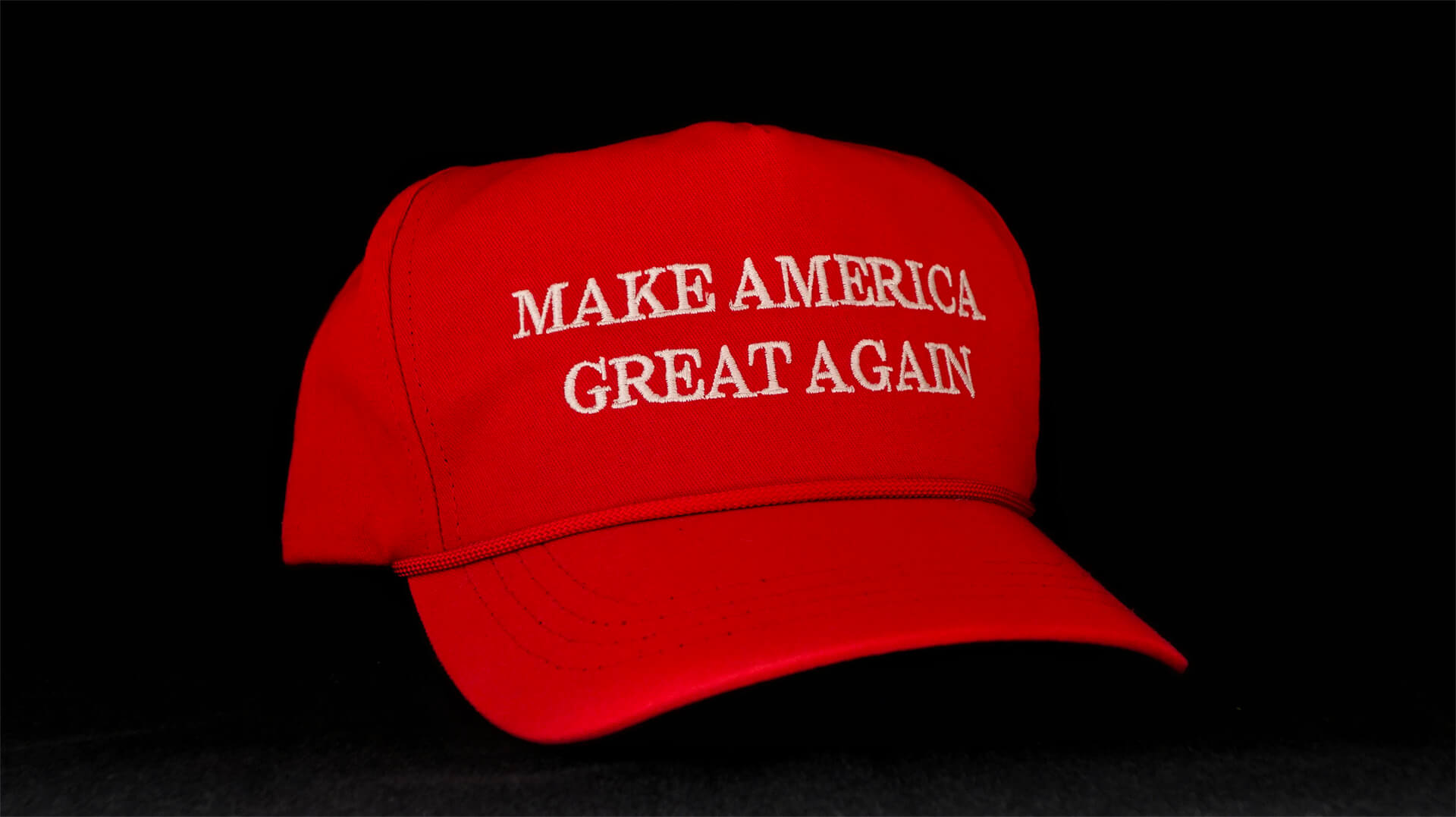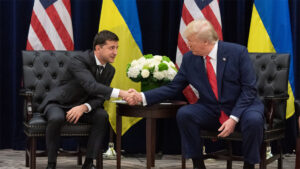Read the other installments in this series:
Life after Trump, Part I: Living in the Lightning
Life after Trump, Part II: Searching for Truth in a Flood of Freedom
Life After Trump, Part III: The End of the Republican Alliance
Life After Trump, Part IV: Building a Better Democrat…Maybe
Life After Trump, Part V: The Opening Roster
Life After Trump, Part VI: The Crisis List—Russia
Life After Trump, Part VII: The Crisis List—The Middle East
Life After Trump, Part VIII: The Crisis List—China
No political party of consequence in the United States has ever been single-issue. American electoral laws dictate that whoever gets one more vote than the next guy gets the seat, pushing political parties to throw as wide a net as possible to get that extra vote. From time to time third parties erupt, but by splitting the vote with their closest ideological neighbor they all but ensure their ideological foes carry the day. In such times, one of the three parties always collapses. Typically, within just a couple of years.
If you want to understand America’s political system, you have to understand the factions that maneuver within the parties.
Populists are most certainly the flavor of the day.
In decades past the Republican Party has treated them like undesirable relations. Working to keep them bottled up in a shack in the woods, and only letting them see the light of day when voting time rolls around.
The reality is of course more nuanced. Populism exists in all societies at multiple points of the ideological spectrum. From to time issues political or cultural or economic generate flares of support or participation. Rightist populists have enjoyed moments in sun under Barry Goldwater, Pat Buchanan, and Ross Perot, but by and large the more establishment bits of the party have done what they can to keep the populists out of national elected positions specifically, and out of the party machinery in general. Once every four years the populists roll into the Republican convention and try to nail things into the formal party charter, but most ideas get slapped down quickly and firmly. The populists were never organized, and any “leaders” of the faction tended to be at each other’s throats, so the more “respectable” Republicans had little difficulty keeping them out of the limelight.
Social media ended that state of affairs. The same technologies which enable me to keep tabs on the world while keeping in touch with friends and family while I’m bouncing around the globe, have enabled the rightist populists to speak directly with one another on a national scale. Regular contact generated connections. Regular connections generated opinion leaders. Opinion leaders generated a political movement. The Tea Party faction of the Republican Party emerged as a major and growing force. And Donald J. Trump took center stage.
Some on the Left are hopeful that the recent purgeof Trump, his inner circle, and violent extremists from social media will push the rightist populists back into the shadows. That fundamentally misreads both the movement and purge’s targets. Techworld is blocking and banning one very specific strain of one very specific faction of conservatism: the rightist populists willing to incite or apply violence.
The vast, vast bulk of the rightist populist movement have not grabbed a can of bear spray and marched on the Capitol. The crowd estimates for the January 6 protest-turned-riot range from only 3,000 to 20,000, with no more than 2,000 actually attacking the Capitol. Techworld’s bans target no one else within the broader population of rightist populism, and for the political opponents of rightist populism to think otherwise is nothing more than a mix of arrogance and denial.
(Fun fact: If you are of a member of the violent group and you’ve threatened me via email or other methods, the FBI already has your information. Thanks for playing.)
Non-violent rightist populists are not simply a part of America’s cultural fabric, they can still communicate and are undeniably in charge of the current iteration of the Republican Party. When Trump mobilized them, voter rolls increased by at least ten million. Some estimates put the number closer to 20 million. In comparison, the entire voting roll for all unionized workers is less than 15 million. There certainly are more rightist populists in the Republican Party today than any other Republican faction. It is likely they are the largest single political faction in the United States. Even if the populists break with Trump, that is hardly the same as saying they would break from Trumpism, which is hardly the same as saying they will simply fade into the background.
The second major faction are the evangelicals. Stretching back to the 1990s, America’s evangelical community has become ever more wound up in the search for political power. The Conservative Coalition, the Christian and Missionary Alliance, even Newt Gingrich’s Contract of America had some religious overtones. President George W Bush quite successfully brought evangelicals – and their millions of votes – into the heart of the Republican Party, catapulting them into governance.
This faction crafted a long-term goal of reshaping American law – especially via judicial decisions – to achieve a broad set of socially conservative policies. In that they’ve experienced more successes than failures. Their biggest wins occurred in the Supreme Court, which now has a 6-3 conservative majority, with three of the six conservative justices evangelical fan favorites. Whether you think this is disastrous or wondrous is of course up to your personal ideological persuasions. Regardless, the evangelicals treated Trump as an investment, and from their point of view – at least until January 5 – it has paid handsome dividends.
The Catholic community of late has experienced a split, for which the 2016 election of Donald Trump is only half responsible. The other cause is the 2013 inauguration of Pope Francis. The two men are polar opposites. Francis is as quiet, humble, kind, tolerant and welcoming as Trump is loud, bombastic, demeaning, exclusionary and bigoted. Their worldviews are similarly opposed, and that tore the American Catholic community right down the middle.
Roughly half of American Catholics followed Francis to a newer, different sort of religious approach that to be perfectly blunt we’ve not seen in Catholicism since the 1800s. The other half broadly followed the evangelical path and started mixing religion and politics, with religion taking the back seat when things started getting morally complicated. Add in (or more accurately, subtract out) the Catholics who became disillusioned and went secular, and what’s left of the politicized Catholic community is a smaller chunk. It is probably a plurality of what existed before, but they are as diehard Trump supporters as the most evangelical of the evangelicals.
This new Catholic core – along with the evangelicals – made their peace with Trump’s version of ethics and morality years ago, deciding to pledge idolatrous commitment to a man who has had an affair with a porn star in order to achieve temporal power in this world. My understanding of their beliefs is that this commitment will have lasting consequences on the other side of this mortal coil, but I’ll leave discussions of such to those more qualified. The bottom line – in the geography that I do understand – is that the religious-driven factions of the Republican Party are unlikely to have a crisis of faith due to the evolving Republican Party structure. Or at least not soon enough to change Congressional voting patterns as regards Trump’s impeachment trial. Add in that the populists tend to define evaluate morals and ethics and responsibility somewhat differently, and it is no surprise that only ten Republicans joined the Democrats in the January 13 vote to impeach the president.
These three factions – the populists, the evangelicals, and the conservative Catholics – collectively own the Republican Party today. This is not how it has traditionally been.
If we dial back to 2010, the Republican Party was a fundamentally different beast. Traditionally speaking, conservatism at its core is driven by fear of the mob. Fear of instability. Fear of threats to civilization. Fear for public safety. Critics say this has made the Republicans the party of the stodgy, and there might be something to that. But it also means old-style Republicans view themselves as the guardians of the institutions and norms and bedrock of modern society. They provide reality-checks on the more liberal and/or wild factions in American politics, doing so with an understanding of the long arm of history and a grounding in economics and a deeper view of the world that is often lacking in the more ideologically focused factions that make up America. Collectively, I think of this old-guard as the math-and-maps crowd of American politics.
It is pretty easy to break these old-style Republicans into three dominant factions.
Let’s start with the really easy one. Fiscal conservatives only care about one thing: making sure the country doesn’t spend more than it earns. In their view excessive budget deficits lead to economic distortions and inflation, knocking all of society out of kilter.
Fiscal conservatives have had a rough time of late. George W Bush ran the biggest post-war deficits in the country’s history, only to be outdone by Obama, only to be outdone by Trump. Then came coronavirus; the new batches of deficit spending nearly sent fiscal voters into straightjackets. They’ve not had a friend in the Republican Party at the national level for a while now and are clearly the weakest of the three old-guard Republican factions. Trump viewed their accounting-inspired fuddy-duddyness as a check on his power. They were among the first groups of traditional Republicans that he sidelined. Trump completely purged them from his administration and the Republican Party apparatus, and even campaigned against them – successfully – in the 2018 midterms. The few that are left in public office spend most of their time looking for beer to cry into.
A far larger and more powerful faction are the national security conservatives.
This faction is particularly sick from the events of January 6. What went down at the Capitol complex is not what they have fought and bled and sacrificed for, and to have a sitting president be the cause of the riot is so far past disgusting the entire military is likely to be in a state of shock and rage for some time. The breach between the national security establishment and the Trump administration is deep and bitter and likely permanent.
For me, the single biggest takeaway is that on January 6 the Pentagon did not insist that the order to mobilize the National Guard come from the president. The military acted despite Trump’s obvious objections. Then, on January 12, the Joint Chiefs released a statement condemning the riots and anyone playing a role in them, supporting the election process and expressly noting that Biden won, and making very clear they would not respond to illegal orders. It doesn’t take much reading between the lines to understand what they think about Trump. You can read the Joint Chief’s statement for yourself here. Functionally speaking, the military stopped recognizing Trump as Commander in Chief.
The bad blood hardly began on January 6.
Trump relied heavily upon “my generals” to staff his cabinet, with James Mattis, HR McMaster, and John Kelly being the three most prominent (and respected) to serve. All three (and many others across the national security community) acted to educate and inform a president who had little desire to be educated or informed. All three (and many others across the national security community) worked to rein in Trump’s darker impulses, and all three (and many others across the national security community) were dismissed for their diligence and integrity.
Trump has used the military as a political prop since the beginning of his presidency. Trump has berated any intelligence official who dares do their job, which is to present the country’s leadership with the truth, no matter how personally, politically, or ideologically inconvenient that might be. Federal law enforcement’s job is to…enforce the country’s laws. Even applying them to the President’s allies. And inner circle. And the President himself.
Trump’s casual – and in some cases, caustic – dismissal of everything the national security community has been trained to do and molded to stand for reverberated throughout the services. Once Trump realized the community wasn’t simply going to unquestioningly carry out his will, he began a thorough (if erratic) campaign to root out the national security community from positions of influence within his administration, then within Congress, and finally within the Republican Party. For all intents and purposes, national security conservatives are no longer Republicans. And in the aftermath of January 6, it is likely they will not rejoin.
The final leg in the Republican old-guard triad is the business community.
The relationship started out smashingly. Right out of the gate Trump slashed corporate tax rates, began a bonfire of the regulations, and formed a series of advisory councils of business leaders to advise him on every aspect of the economy. Businesses loved that. (Fun fact: I loved it too! Several of my clients snuck copies of my books onto the Resolute desk. No photos unfortunately. V sad.)
The affair cooled quickly. Recommendations were met with ideological, even nonsensical, rhetoric and personal insults. More than one captain of industry was called a “f**king fag” to his face. Disagreements, no matter how delicately or respectfully presented, were rewarded with expulsion and isolation. In less than six months, Trump had disbanded all the advisory councils. Then came the harangues on supply chains. And the trade wars. And the demands for campaign funding that bordered on the threatening.
When COVID struck in early 2020 the business community had loads of ideas about what the federal government could and could not and should and should not do. But on everything from the possibility of building a domestic supply chain for personal protective gear to how to prepare the logistics of vaccine distribution, the responses from the Trump administration ranged from bewilderingly obtuse to outright hostile. Businesspeople felt like they did…during the Obama administration: under rhetorical siege and facing a hermetically sealed White House that they could neither penetrate nor understand. The business community lays most of the blame for America’s poor coronavirus management at the feet of the man charged to do the managing: the president.
And then we had the Capitol riots on January 6.
All Republicans say they value law and order in society, and arguably all do. But just as all of us internally rank-order what’s important, so too does the business community. For them, law & order is always near the very top. They have facilities, staff, reputations. If law & order breaks down, nothing else that they do matters. To see the president summon and rally the rioters and launch them against the Capitol complex was simply too much to bear. The bulk of the American business community – up to and including the American Chamber of Commerce – condemned the President that day and called upon Vice President Mike Pence to remove him from office.
Trumpism scares the business community for the same reason terrorism and the Black Lives Matters movements scare them. It is disruptive. To laws. To regulations. To taxes. To the workforce. To consumption. To investment. To supply chains. To stability.
What began with Techworld’s deplatforming of TeamTrump has extended across the entire business space. Companies are falling over one another to cut their ties not simply to TeamTrump but to any affiliated politician who participated in efforts to undermine the 2020 general elections. Rex Tillerson, both former Exxon CEO and Trump’s first Secretary of State, has been particularly vocal, laying out how and why the United States is “in a worse place today than we were before he [Trump] came in”.
But if you’re looking for a truly monumental turning point, the names to watch are Koch, Ricketts, Marcus, and Griffin. All are huge business names and massive Republican donors and staunch social conservatives. None were thrilled when Trump took over the Republican Party. All got (very) quiet when Trump turned the party into a cult of personality. All have (very very) quietly signaled in recent days that they are reevaluating…everything about their relationships with politicians, candidates, and the party’s infrastructure, with particularly narrowed eyes on those Congresspeople who after the January 6 riot still chose to vote against certifying the election results. A mass desertion of the business community would be bad enough for what’s left of the Republican Party but should names like these leave – names that have fused business and social conservativism – the breach would be deep and permanent. The Republican Party would no longer be the party of money.
The business and national security communities are having a bit of a dark contest over who is more pissed off at President Trump, because in Washington no one is in charge of the things they care about. The Defense Secretary has been in the big chair only since the week after the election. The Attorney General only since Christmas. The Department of Homeland Security Secretary was the administrator of FEMA until midnight January 12…which left FEMA without a captain. None of them have been Congressionally confirmed, and arguably none of them are sufficiently qualified for the jobs they now hold. Such positions have never been empty at a time of a presidential transition, much less all four at once.
Similar inadequacies and vacancies spill down the staff rosters throughout the federal government – especially at DHS and Commerce – and are at least in part responsible for the lack of law enforcement preparedness at the Capitol on January 6. For these communities, it feels as if for Donald Trump, law & order and national security are not even worthy of consideration.
And yet elections aren’t just about money or numbers of factions, but also about the numbers of voters. Even if the fiscal, national security and business factions fully disconnect from the Republican coalition and none of them ever vote red again, Trump will have still increased the size of the Republican Party simply from mobilizing the populists. This isn’t over.
Not by a long shot.
Now for those of you on the Left who are getting all giddy. Curb your damn enthusiasm. If you think I would wax philosophic for 3000 words about Republicans-changed-this and Republicans-gone-that and not take the Democratic Party through the wringer in the next breath, well, then you don’t know me at all.
Coming soon:
Life After Trump, Part IV: Building a Better Democratic Party…Maybe
If you enjoy our free newsletters, the team at Zeihan on Geopolitics asks you to consider donating to Feeding America.
The economic lockdowns in the wake of COVID-19 left many without jobs and additional tens of millions of people, including children, without reliable food. Feeding America works with food manufacturers and suppliers to provide meals for those in need and provides direct support to America’s food banks.
Food pantries are facing declining donations from grocery stores with stretched supply chains. At the same time, they are doing what they can to quickly scale their operations to meet demand. But they need donations – they need cash – to do so now.
Feeding America is a great way to help in difficult times.
The team at Zeihan on Geopolitics thanks you and hopes you continue to enjoy our work.








